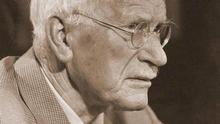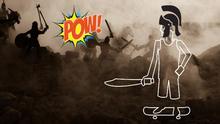When You Need a New Perspective
Habitual attitudes often blind us to new possibilities and options. Life is most rewarding for me when I am growing and learning. I've found that the archetypes that are dominant for me and others are important for authenticity and for the primary lessons we are learning at any given time. However, they can also obscure other possibilities. We all need the flexibility that allows us to relate to a variety of people and situations. Here are some examples of common situations that require tapping into new archetypes.
Feeling Stuck: Katherine was a member of a women's group, where she once again showed up furious with her husband who seemed not to notice things that need to be done around the house. The group then invoked their practice of identifying the multiple stories about any given situation. She identified that the story she told herself was about how unfair he was to her, as she ended up doing everything herself. In conversation with the group, she identified her archetype as the Idealist. She was seeing herself as the innocent part of this archetype, not knowing what to do if others did not live by her values. In this case, that everyone should help out in a home and that sex roles should be equal, as her husband said he also believed.
Others chimed with alternative stories. The Warrior might demand that he do his part and call him on it when he does not. The Lover would naturally share how his assumptions that she would do everything made her feel. The Realist could acknowledge that some people really don't notice what needs to be done, so hire more help. The Creator might naturally brainstorm with him about how to get all the housework done. The Ruler would surely create a plan for who would do what when. The Jester could crack jokes about his being such a slacker or simply let things pile up until it got his attention.
These fresh perspectives freed Katherine from seeing things just one way. She gathered them as a stockpile of stories to tell herself when annoyed with her husband, increasing her options about how to think and what she might do. As a result, her anger at her husband abated and her strategies for their being more of a team in the home increased.
Whenever you are feeling particularly aggrieved and not knowing what to do, exploring how many stories you can make up about the situation based on your archetype profile, and in particular your midrange archetypes, can help expand your options.
Being Blindsided: Sometimes new and unexpected circumstances require new perspectives. Ethan ran a thriving business, with leadership informed by the Ruler's ability to develop orderly systems, the Caregiver's concern for employees and customers, and the Idealist's optimism. All was going well until a competitor's new invention changed everything, and the bottom fell out for sales in Ethan's company. He called up his Realist archetype, which had earlier helped him face the facts of his parents' impoverished state and find a way to get educated. But that alone was not enough. He hired a consultant known for his Revolutionary ability to turn things around quickly, and worked to quiet his own resistance to doing what was required to recreate his business. In the process, he awakened his own inner version of the Revolutionary, which led him to make other changes in his life, including eating differently and getting up early to go to the gym.
Your situation might be very different, but if something happens out of the blue that requires immediate attention, it can be helpful to consider what archetypal stories you are currently living—and what else you might need. Sometimes that requires engaging someone, a friend or a professional, who lives and exemplifies the needed story, until it becomes your own.
Natural Growth and Development: In his 20's, Nathan's goal was to get as much gusto out of life as he could, mainly through travel and trying every new thing that came around. But, at 32, he realized it might be a good idea to find a wife, settle down, and (sadly, he thought) find a job that would make him some real money. He identified that his primary archetypes had been Idealist for optimism, Seeker for exploring the world, and Jester for his gusto and playful spirit.
He figured that he might find a job he enjoyed that included some travel, but it might help in seeking a wife to awaken his dormant Lover and if they had kids, his dormant Caregiver. As these desires were congruent with his new life stage, some of the changes he needed happened organically. He started dating more seriously and actually found himself in love, and as that happened, acting in more romantic ways. When, at their wedding, his buddies teased him about all he would have to give up, his response was just to smile happily.
A few years later, he was terrified, when his wife got pregnant, that he would not be able to make the sacrifices necessary to care for a baby. But when he first held his daughter in his arms, he fell in love with her, too. He then happily gave up many experiences that had once been what his life was about to share in caring for her.
It can be helpful for any of us to trust that when we are in a time of transition, the appropriate archetypes often awaken as they are needed.
These are just a few examples of why the PMAI® assessment is a growth instrument that provides you with information about where all twelve of the archetypes are in your life at any given time. Thus, it can help you navigate a multitude of circumstances throughout your life.














_thumb.png)










_thumb.png)
_thumb.png)
_thumb.png)
_thumb.png)


